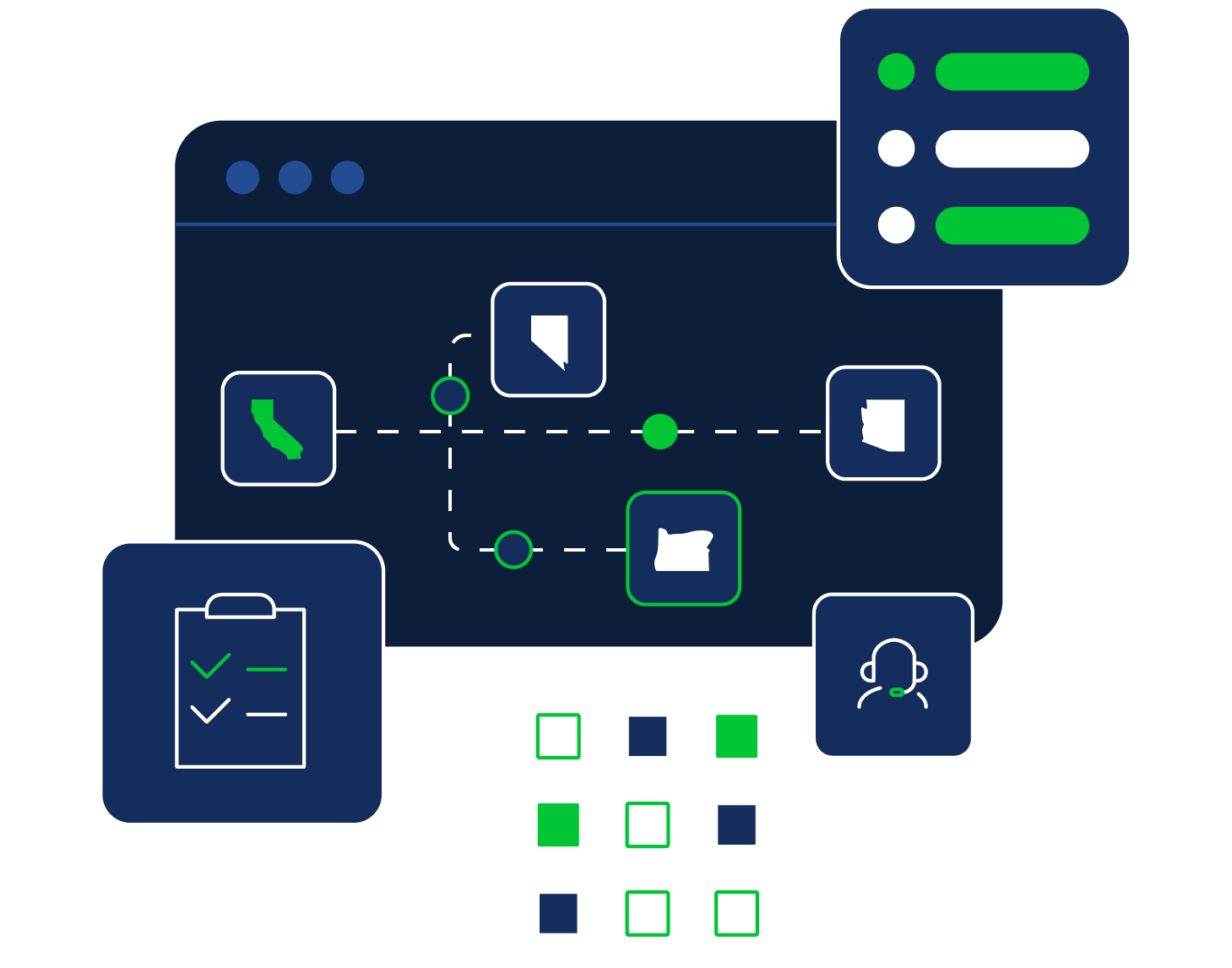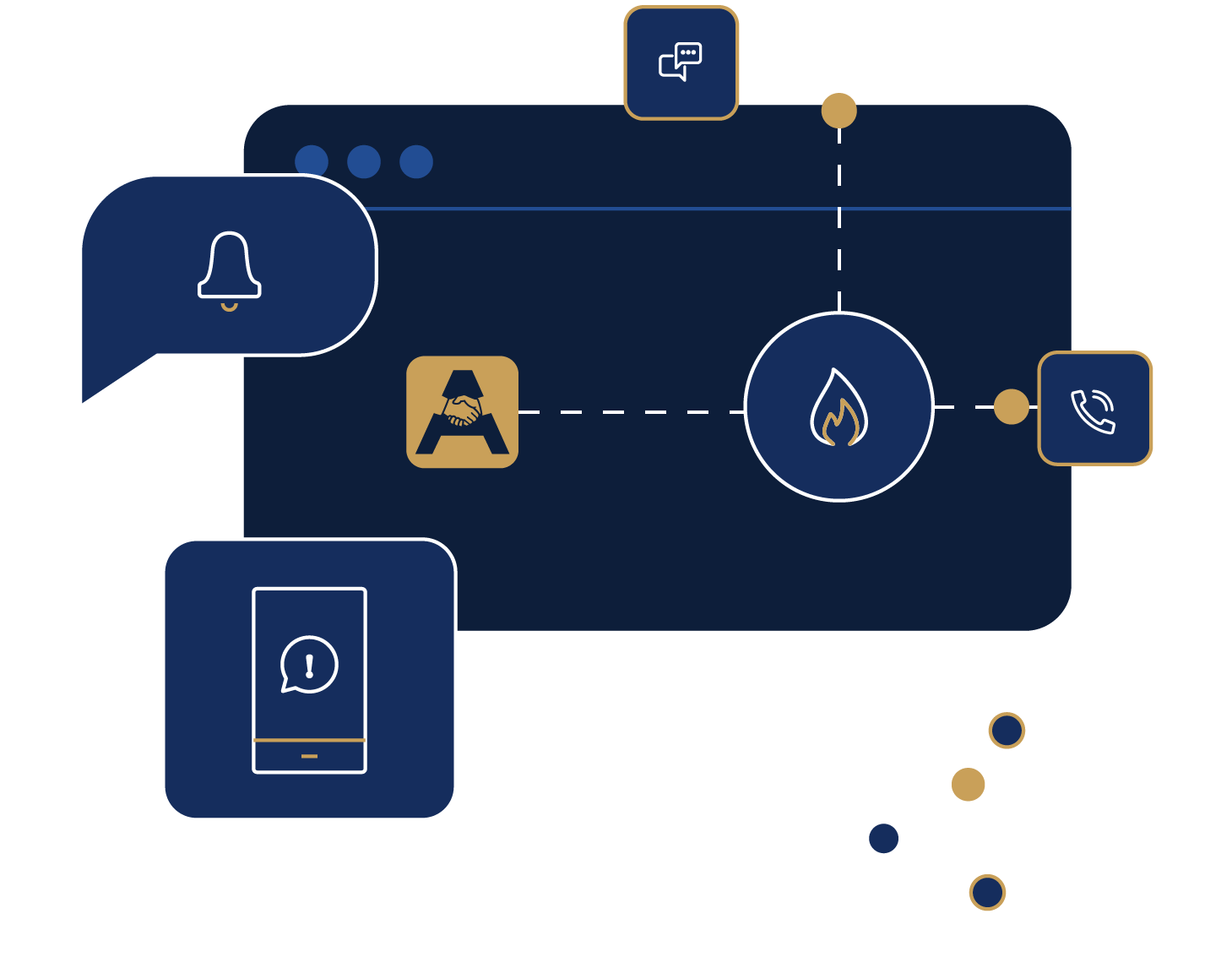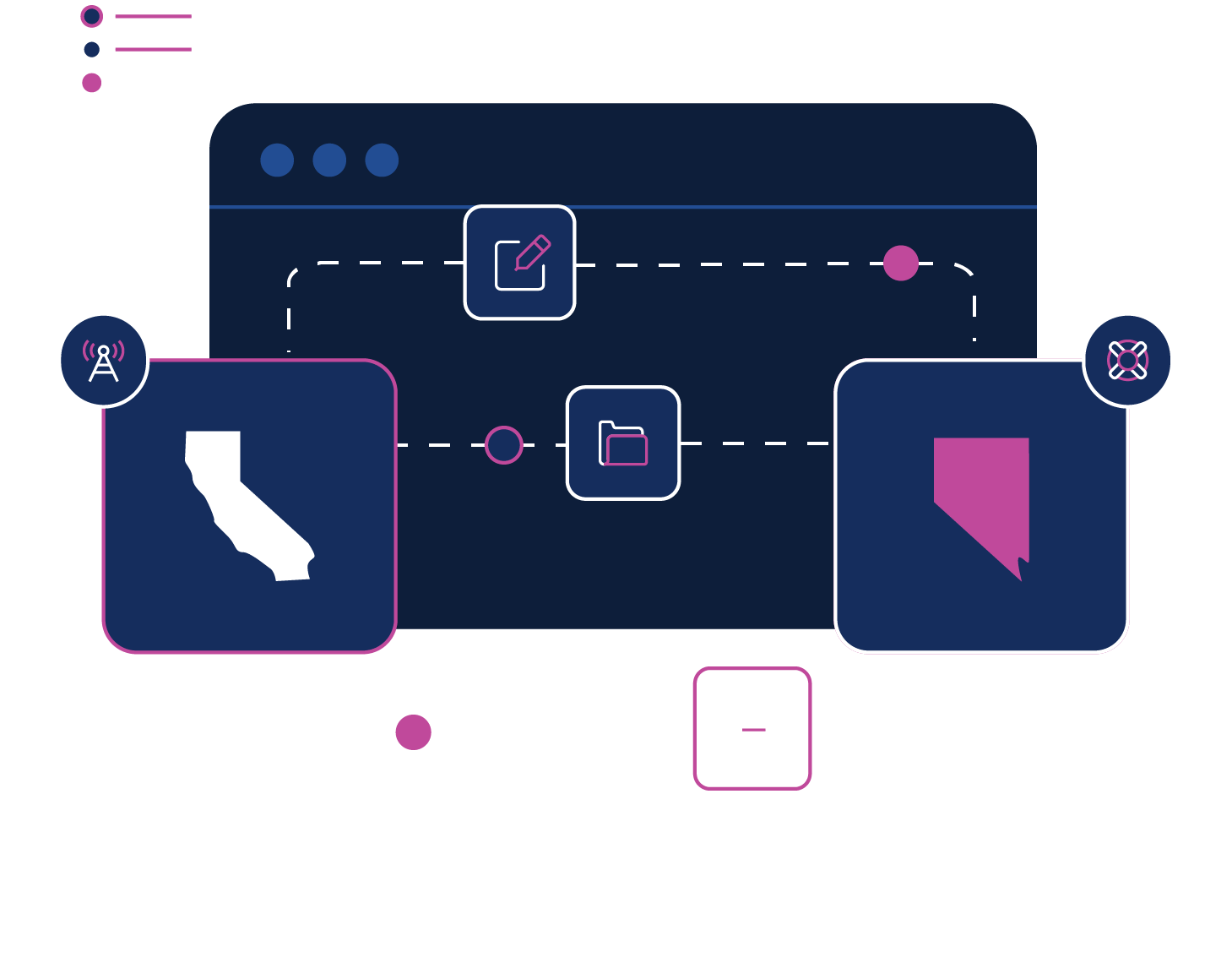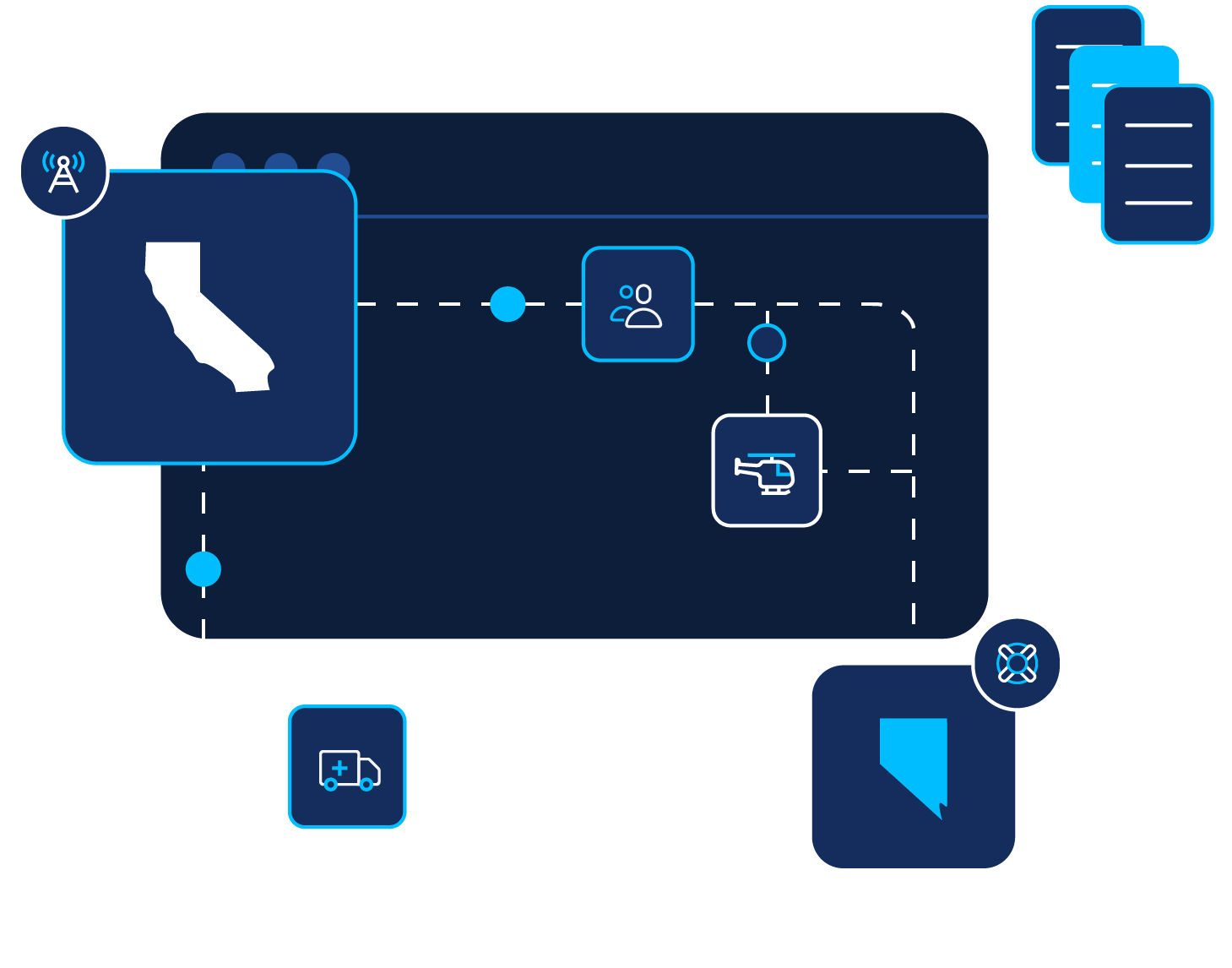
EMAC has been ratified by U.S. Congress (PL 104-321) and is law in all 50 states, the District of Columbia, Puerto Rico, Guam, the U.S. Virgin Islands, and the Northern Mariana Islands. EMAC's Members can share resources from all disciplines, protect personnel who deploy, and be reimbursed for mission-related costs.
Learn more about EMAC by watching the introduction video.
Workers' compensation, tort liability, license reciprocity, and reimbursement are among its many provisions

EMAC, state law in all 50 states, the District of Columbia, US Virgin Islands, Puerto Rico, Guam and the Northern Mariana Islands, is implemented on behalf of the Governors by the emergency management agencies.
The success of the EMAC system is dependent on everyone identifying and fulfilling their responsibilities within the process.

In the pre-event preparation phase of EMAC, State Emergency Management Agencies and Resource Providers from all jurisdictions (state, county, local, or private sector) have a responsibility to prepare before an emergency or disaster occurs.
Preparation includes the development of internal procedures for implementing EMAC, incorporate planning and lessons learned, resource allocation with neighboring states, conducting EMAC training and exercises in cooperation with State EMA/Resource Providers, developing Mission Ready Packages (MRPs), and more.

To receive resources through EMAC, a state's Governor must have declared an emergency or disaster which authorizes funds to be expended for response and recovery and activating EMAC.
Even prior to the declaration, the affected state opens an event in the online EMAC Operations System (EOS), alerting both the National Coordinating State (NCS) and NEMA that a request for resources is likely.
Note: Only the affected state needs to declare an emergency or disaster.

Once resource requests are sourced to EMAC, the request and offer process is initiated.
Resource requests are sourced starting with the closest states (time/distance).
The potential Assisting States assess their own risk level, and if able, use their in-state EMAC activation protocols to contact Resource Providers to determine availability and to submit offers of assistance. If resource Providers have Mission Ready Packages (MRPs) this process takes less than a minute.
The Requesting and Assisting State Emergency Management Agencies complete the EMAC Resource Support Agreement (RSA) for accepted offers of assistance. The completed RSA constitutes a legally binding agreement between the two states.
The process is facilitated through the EMAC Operations System (EOS).

Once the Resource Support Agreement (RSA) is complete resources prepare to Mobilize (prepare for their mission), Deploy (conduct the mission in the Requesting State), and Demobilize (return home).
It is critically important that Deploying Personnel receive a pre-deployment briefing, receive an EMAC Mission Order Authorization Form (Mission Order) prior to their deployment, are educated on EMAC, understand their responsibilities in tracking mission expenses and maintaining documentation, and maintain contact with their home state emergency management agency while on their deployment.
Due to the nature of the situation, deployed personnel will likely encounter difficult living and working circumstances, limited communications, traumatized residents and coworkers, long working hours, primitive field conditions, and other difficult situations. Deployed personnel routinely say going on an EMAC deployment has been the most rewarding event of their careers.

Deployed Personnel, Resource Providers, Assisting and Requesting States share the responsibility for the timely processing of reimbursements.
Reimbursement starts with Deployed Personnel and Resource Providers submitting a reimbursement package to the Assisting State. Assisting States audit reimbursement packages that are sent to Requesting States who, upon completing an audit and resolving any outstanding issues, issue payment back to the Assisting State.
The EMAC eLearning Center has free online courses that covers the EMAC system from preparing for an EMAC mission to seeking reimbursement.
Start your online course today!

Deploying through EMAC?
Get "Just in Time Training" via the EMAC App. Check out our App (on iOS and Android)

In the pre-event preparation phase of EMAC, State Emergency Management Agencies and Resource Providers from all jurisdictions (state, county, local, or private sector) have a responsibility to prepare before an emergency or disaster occurs.
Preparation includes the development of internal procedures for implementing EMAC, incorporate planning and lessons learned, resource allocation with neighboring states, conducting EMAC training and exercises in cooperation with State EMA/Resource Providers, developing Mission Ready Packages (MRPs), and more.

To receive resources through EMAC, a state's Governor must have declared an emergency or disaster which authorizes funds to be expended for response and recovery and activating EMAC.
Even prior to the declaration, the affected state opens an event in the online EMAC Operations System (EOS), alerting both the National Coordinating State (NCS) and NEMA that a request for resources is likely.
Note: Only the affected state needs to declare an emergency or disaster.

Once resource requests are sourced to EMAC, the request and offer process is initiated.
Resource requests are sourced starting with the closest states (time/distance).
The potential Assisting States assess their own risk level, and if able, use their in-state EMAC activation protocols to contact Resource Providers to determine availability and to submit offers of assistance. If resource Providers have Mission Ready Packages (MRPs) this process takes less than a minute.
The Requesting and Assisting State Emergency Management Agencies complete the EMAC Resource Support Agreement (RSA) for accepted offers of assistance. The completed RSA constitutes a legally binding agreement between the two states.
The process is facilitated through the EMAC Operations System (EOS).

Once the Resource Support Agreement (RSA) is complete resources prepare to Mobilize (prepare for their mission), Deploy (conduct the mission in the Requesting State), and Demobilize (return home).
It is critically important that Deploying Personnel receive a pre-deployment briefing, receive an EMAC Mission Order Authorization Form (Mission Order) prior to their deployment, are educated on EMAC, understand their responsibilities in tracking mission expenses and maintaining documentation, and maintain contact with their home state emergency management agency while on their deployment.
Due to the nature of the situation, deployed personnel will likely encounter difficult living and working circumstances, limited communications, traumatized residents and coworkers, long working hours, primitive field conditions, and other difficult situations. Deployed personnel routinely say going on an EMAC deployment has been the most rewarding event of their careers.

Deployed Personnel, Resource Providers, Assisting and Requesting States share the responsibility for the timely processing of reimbursements.
Reimbursement starts with Deployed Personnel and Resource Providers submitting a reimbursement package to the Assisting State. Assisting States audit reimbursement packages that are sent to Requesting States who, upon completing an audit and resolving any outstanding issues, issue payment back to the Assisting State.